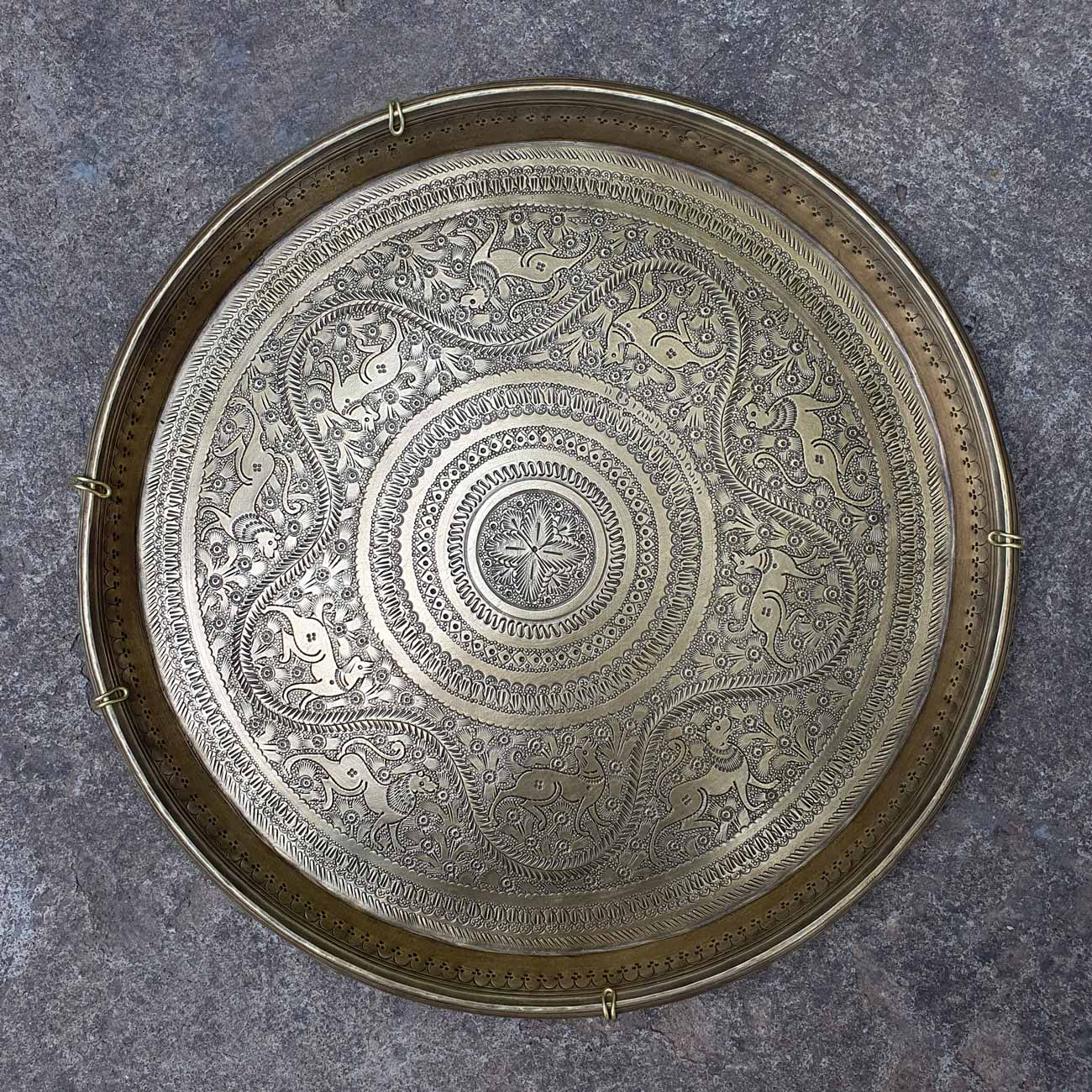- Home
- Thali with Star Shape
Loading...
Thali with Star Shape
All orders are insured for transit.
This item cannot be shipped outside India.
All orders are insured for transit.
This item cannot be shipped outside India.
Details
| Size: | 11 inches (diameter) |
| Material: | Brass |
| Origin: | Gujarat |
Description
This thali would have most likely been used to serve sweet meats or fruit, or as a tray for a hookah or a water ewer (jug) at elaborate feasts for kings and nobility.
The depiction of hunting scenes or hunting dogs came from the Persian influence, through the Mughals. The subject can be seen in miniature paintings, carpets and platters of the time. Hunting was also the favourite sport of many kings and nobility.
| Thalis & Platters |
-
Description
Read MoreThis exquisite brass thali or platter from Gujarat has been made using repousse and engraving techniques. It is possibly from the princely state of Junagadh, which included part of the Gir forest. A star shaped meandering design encloses five hunting dogs, and separates off five figures of lions, both surrounded by foliate. A stylised flower in the centre is surrounded with concentric designs of geometric and plain bands.
This thali would have most likely been used to serve sweet meats or fruit, or as a tray for a hookah or a water ewer (jug) at elaborate feasts for kings and nobility.
The depiction of hunting scenes or hunting dogs came from the Persian influence, through the Mughals. The subject can be seen in miniature paintings, carpets and platters of the time. Hunting was also the favourite sport of many kings and nobility.Thalis & Platters -
ABOUT Thalis & Platters
Read MoreThe history of the platter or ‘thali’ in India, goes as far back as the Indus Valley Civilization, where examples have been found in excavations at the site of Kalibangan from 3500 BCE – 2500 BCE. In later periods, thalis were used for both religious and domestic purposes, and were often made in gold or silver. In religious practice, these precious metals were believed to have ritualistic purity, and in terms of serving food, the precious metals were believed to detect poison. Thalis were also a way to show the wealth and power of nobility and kings. Miniature paintings dating as far back as the 15th century, depict thalis being used to serve sweet meats and fruits, and as a tray for a hookah, water jug or other vessels.
Besides gold and silver, brass was also used as far back as 1st century BC to make thalis, partly because it was more resistant to wear, but also because it was ‘gold-like’ in appearance, and hence indistinguishable. Unfortunately, many of these items, when damaged over time, would be melted down and the metal reused to make new objects. Very few of these age-old thalis and platters survive today.
These old thalis feature breathtaking and intricate detailing, achieved with the use of repoussé, embossing, and engraving techniques. Repoussé is a metalworking technique, in which a malleable metal is shaped by hammering from the reverse side, to create a design in low relief. Chasing or embossing is a similar technique, in which the piece is hammered on the front side, sinking the metal. The two techniques are often used in conjunction. Engraving is the practice of incising a design onto a hard surface, by cutting grooves into it with a burin.
The thalis are from different parts of South India and Gujarat, with some being of Persian, Egyptian and Sri Lankan origin. The subjects depicted in the thalis range from Hindu gods and goddesses to floral patterns to animals and other mythological figures. The rarity of these finds, coupled with the beauty of the hand work, makes these thalis and platters truly worthy collectibles. All thalis have a handmade brass or copper holder, that has been created specifically for the platters to be hung on the wall.
-
Details
Size: 11 inches (diameter) Material: Brass Origin: Gujarat -
Returns
We accept returns within 7 days of delivery if the item reaches you in damaged condition. -
Shipping
Shipping costs are extra, and will be calculated based on the shipping address.All orders are insured for transit.
This item cannot be shipped outside India.
This item has been added to your shopping cart.
You can continue browsing
or proceed to checkout and pay for your purchase.
This item has been added to your
shopping cart.
You can continue browsing
or proceed to checkout and pay for
your purchase.
This item has been added to your wish list.
You can continue browsing or visit your Wish List page.
Are you sure you want to delete this item from your Wish List?
Are you sure you want to delete this
item from your Wish List?
























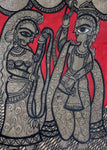








































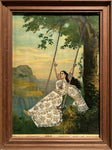















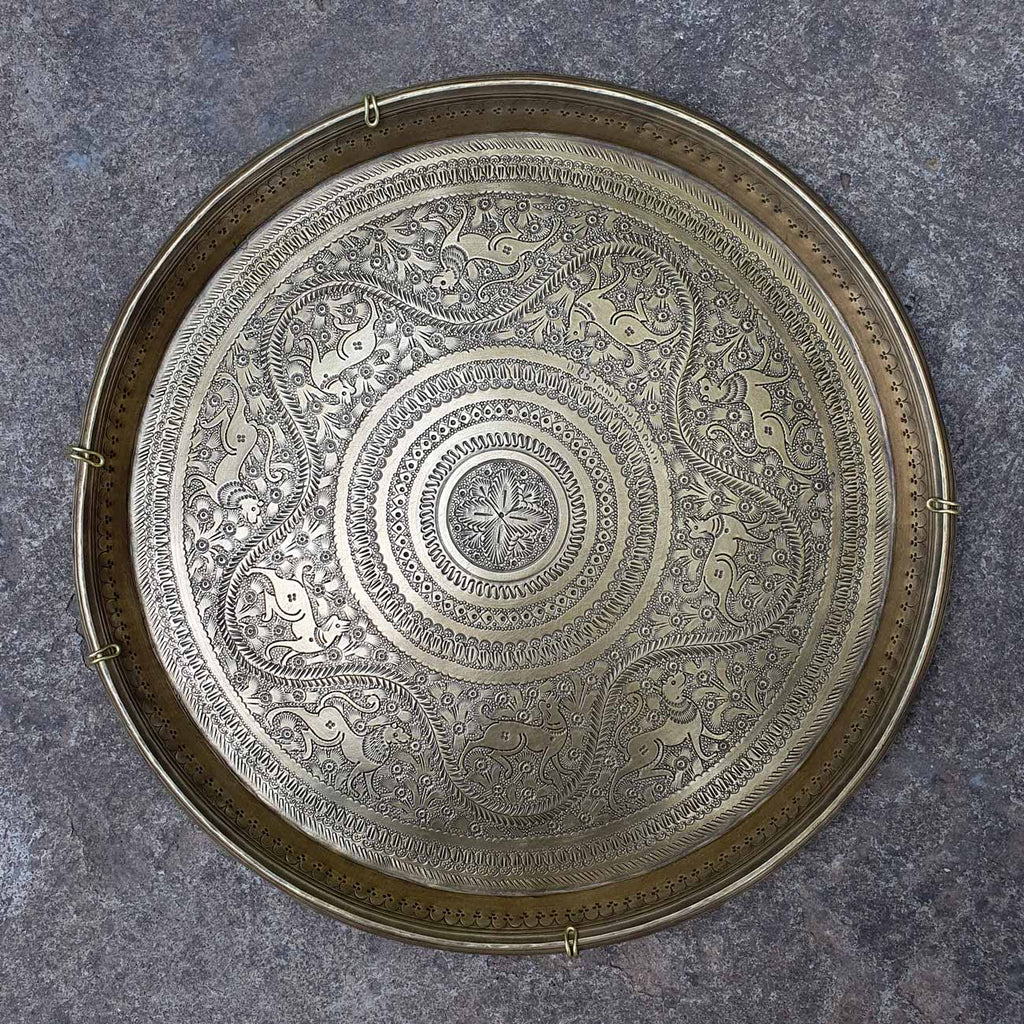
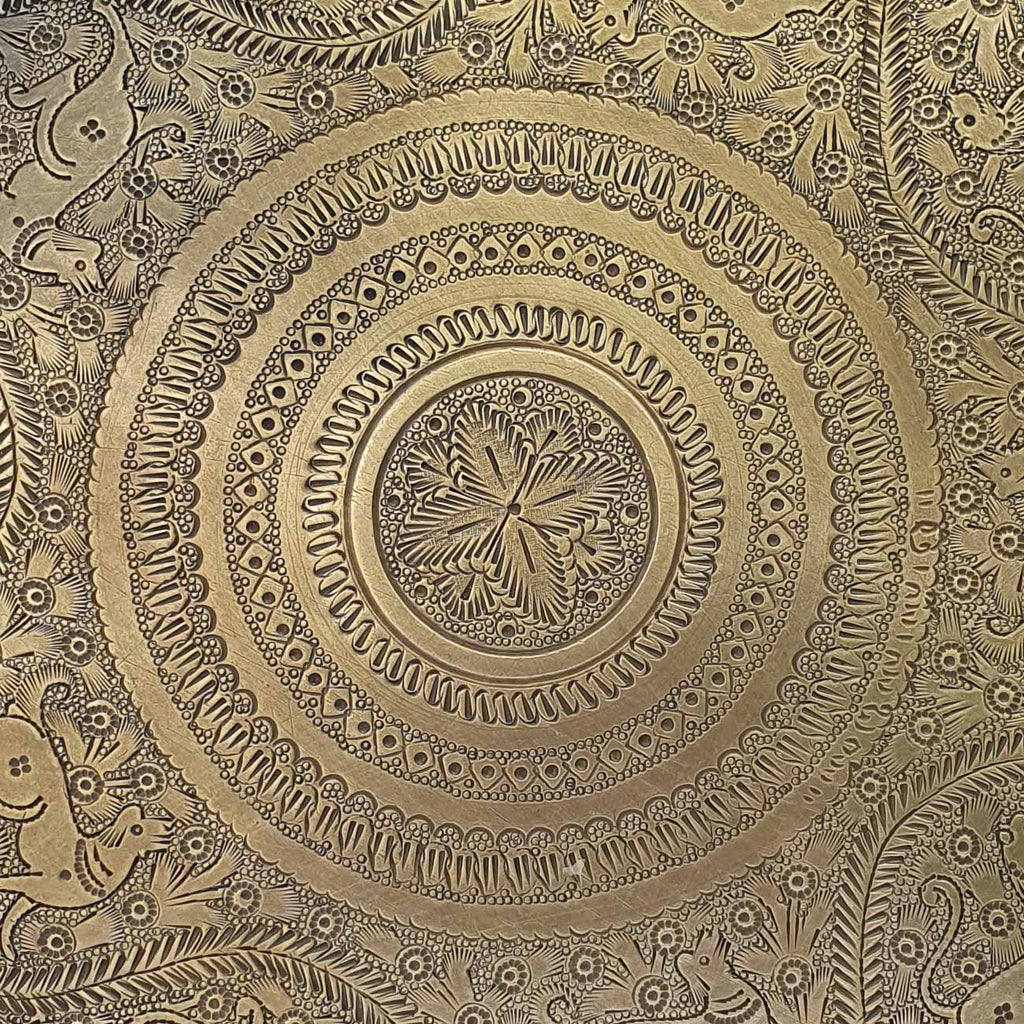
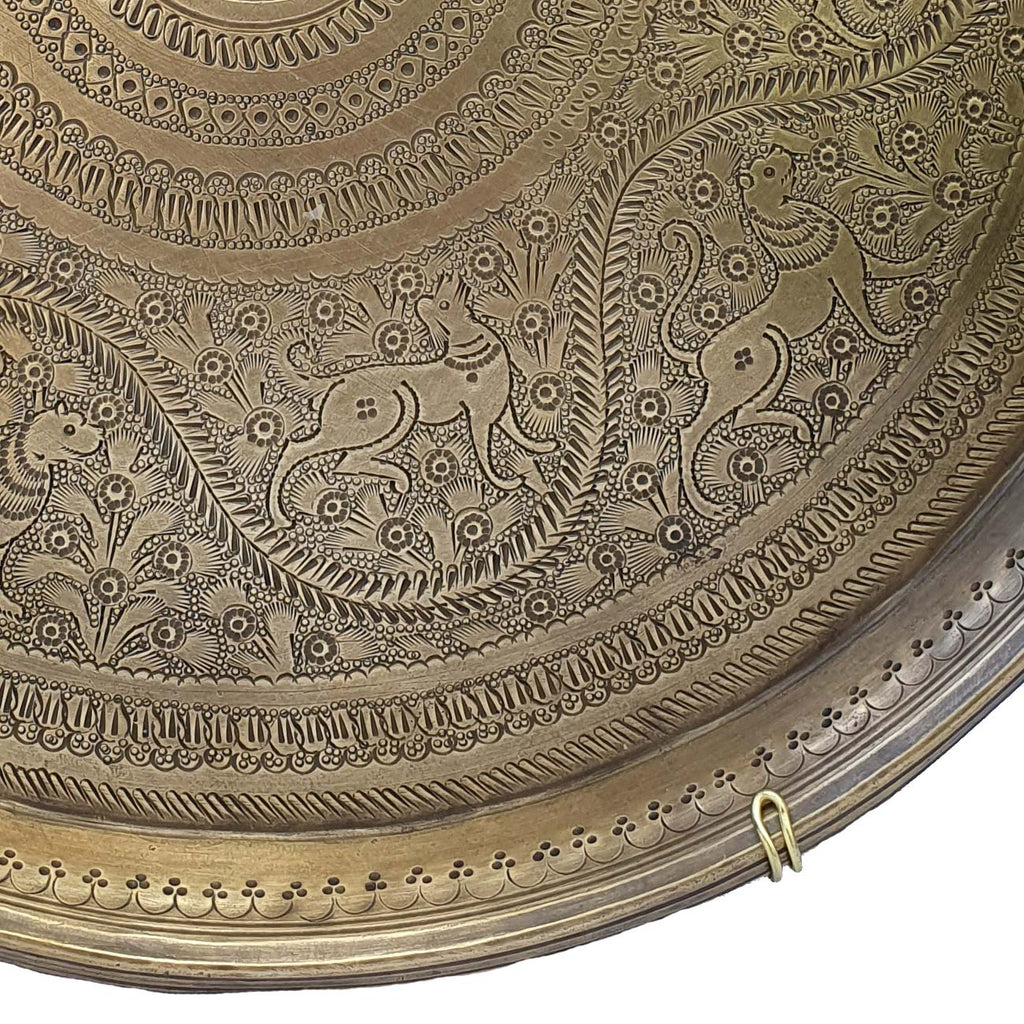
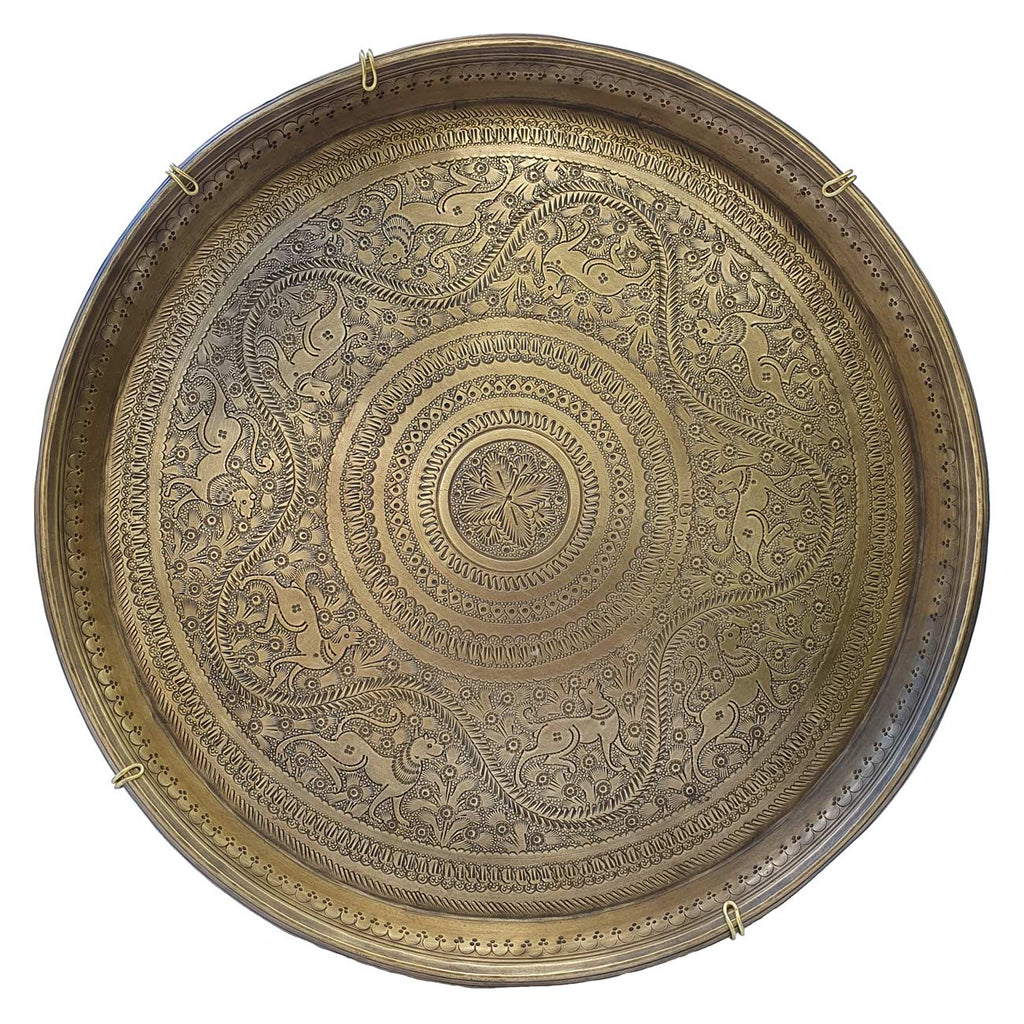
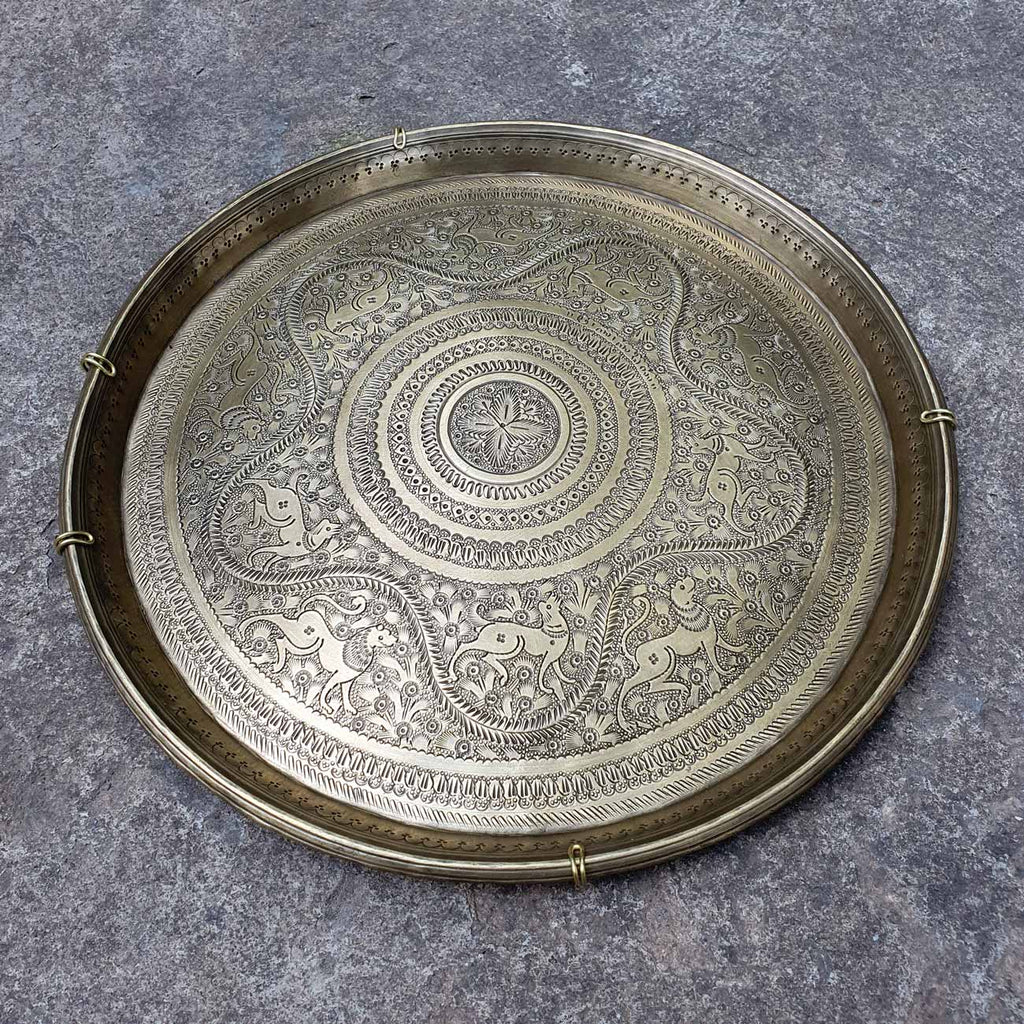
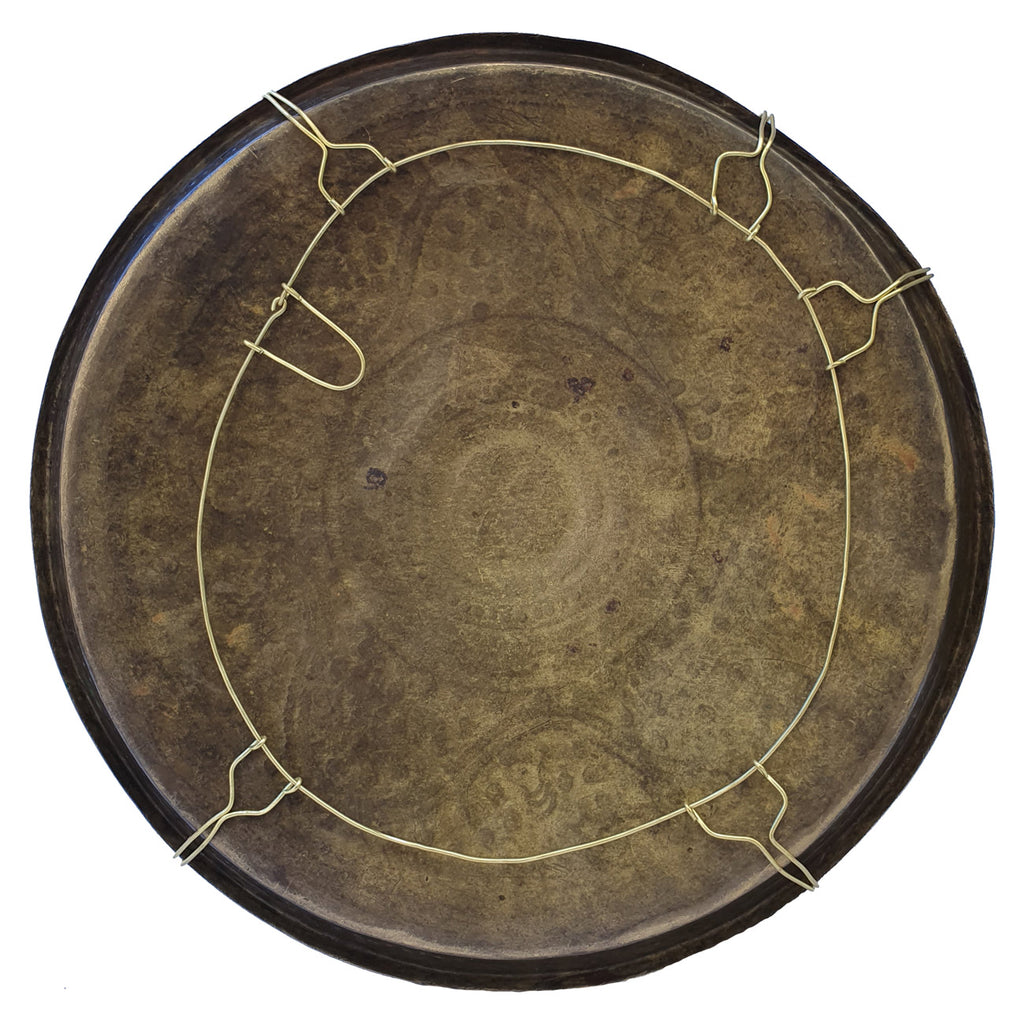
 View Full Screen
View Full Screen
